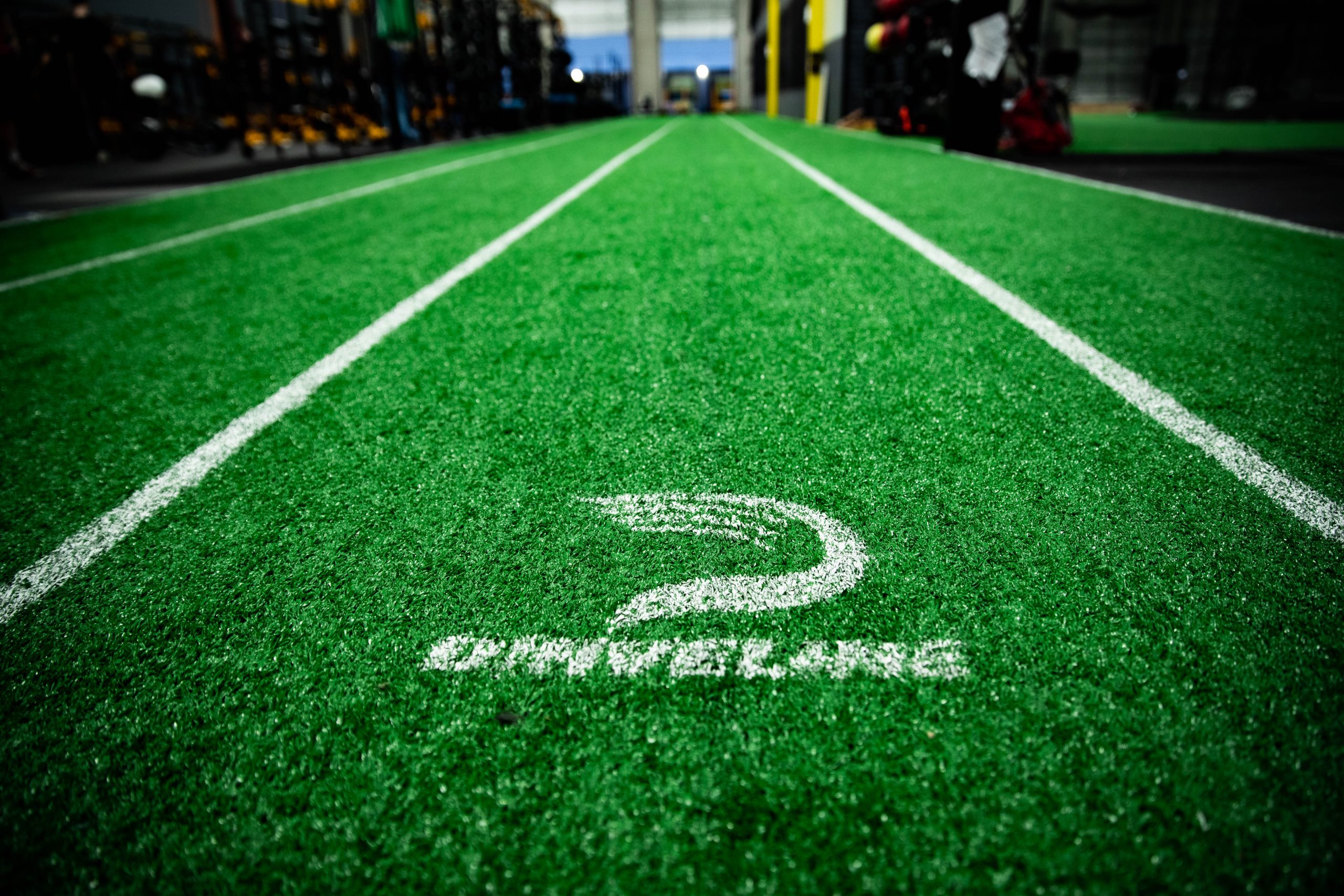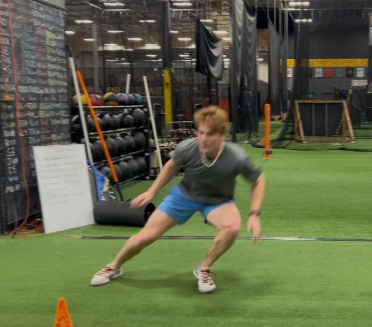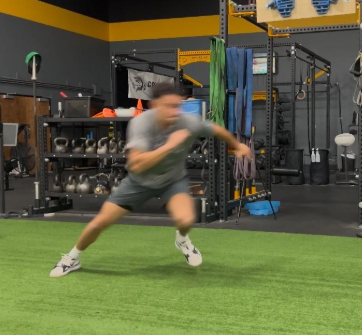Off-Season Speed Training for Position Players – Part 4: Change of Direction

This is the final installment of our four-part series detailing the elements of the speed training program we implemented with a group of Minor League Baseball (MiLB) position players this past off-season. In Part 3 we overviewed our approach on programming non-linear running, and we will wrap this series up with the details on our change of direction segment.
Friday, the third and final day in our week of speed training, focuses on change of direction (COD) shuffling and multi-directional sprinting.
- We perform this portion of our speed training at the end of the week because it is the most fatiguing of the three days.
- Introduce volume gradually to ensure that athletes’ tissues can tolerate the high demands of cutting and general COD.
Dynamic Preparation
During the dynamic warm up, we put more of a focus on moving laterally since a significant portion of the session will incorporate frontal plane movement. There will be more shuffling than on the other two days, and we also incorporate two lateral A-skips variations.
During standard lateral A-skips, I don’t want to see the feet cross over. The athletes’ hips and shoulders should stay square while maintaining the arm action and knee drive typical of regular A-skips, just with movement in the frontal plane.
In lateral drive A-skips, I want to see the same general technique as regular lateral A-skips, but the back leg gives an aggressive lateral push to drive the body sideways. The lead leg should NOT reach out; it performs a regular knee drive as the body travels laterally. This drill encourages the back leg to aggressively extend to accelerate in the frontal plane, which carries over into what we want to see during our COD drills.
Jumping
After the dynamic warm up, our jumping segment focuses on skater jump variations, with goals of:
- Help prepare the lower body to accept and then redirect the body’s mass on one leg in the frontal plane.
- Encourage the torso to lean in line with the direction of the forces being absorbed and produced by the lower body.
Some of the skater jump variations we used included:
Dynamic repeated skater jump
Repeated skater jump
Skater jump with stick
Banded skater jump with stick
Banded repeated skater jump
Skater jump to single leg hop
Change of Direction
Our COD work for the duration of the off-season focused on three types of cuts: shuffle to shuffle, shuffle to sprint, and sprint to sprint.
At the start of the off-season when cutting was introduced, the first drill we implemented was a shuffle to shuffle cut of about four yards with the cut location marked by a cone.
We started with the cutting point visually marked to allow the athletes to focus on their footwork without having to be concerned with reacting to an outside stimulus. While we rarely see incidences in sport where an athlete has to change direction based on a pre-determined constraint, it can have its place here with the goal of preparing for real COD work. Having fewer degrees of freedom to deal with can isolate the joint positioning and angles and be a better teaching tool than when the athletes are having to react unexpectedly.
Here we can see athletes working through predetermined cuts in shuffle to shuffle, shuffle to sprint, and sprint to sprint:
Outside of warmups, cutting with the cone as a marker was only used during the first couple sessions. We quickly moved to implementing a reactive stimulus, with an external visual cue. The athletes would be told ahead of time which direction they would initially be moving toward, and an arm movement as the starting cue. This way their reactions were spontaneous and more “game-like,” rather than pre-planned around a count down.
When transitioning out of a shuffle cut to shuffle, we want to see the athlete in a good position to continue the lateral gait cycle as he reaccelerates in the opposite direction. Here we have an athlete coming out of a shuffle cut to shuffle:

There is a straight line at approximately a 45-degree angle from the athlete’s right foot through his left shoulder. This indicates that he can direct force into the ground with minimal energy “leaks” occurring due to poor posture and/or movement inefficiencies.
Proper technique and positioning are important for movement efficiency. But they become extra important when things go awry. This athlete is able to easily recover after slipping—since the rest of his body was positioned where it needed to be, he was able to quickly reorganize. pic.twitter.com/NKRENZ2lac
— Jen Taft (@JTaft7) February 5, 2025
When transitioning out of a shuffle cut to sprint, we want to see a similar angle from the back foot through the front shoulder, but here the lead leg should be unloaded so that the hips can open up and let the lead leg rotate to face forward. Below, the athlete is about to take his first step after planting into a shuffle cut that turned into a sprint. This is also what we would want to see for an athlete sprinting into and out of a sprint cut.

Arm action will also look different than in a shuffle cut to shuffle, as the arm swing from a transition into sprinting involves a different and larger range of motion than that used during the lateral gait cycle of a shuffle.
Repetition helps create efficiency. While coaching and correcting can speed up learning mastery, letting athletes make mistakes and try out different movement solutions often naturally leads the athlete to discover what is most efficient. It can be helpful to video athletes in order to show them what they are doing, as oftentimes they need to see their movements in order to understand the feel they need to correct it. Remember, they won’t have anyone on the field with them providing verbal cues for every technique, so if they need them from you every rep to execute in the training environment, you might not be developing abilities that translate to competition.
Wrapping Up
This concludes our four-part series detailing the elements of the speed training program we implemented with our MiLB position players this off-season.
To read the first three parts, visit these links:
Part 1 – Off-Season Speed Training Overview
Part 2 — Acceleration
Part 3 – Non-Linear Running
Comment section